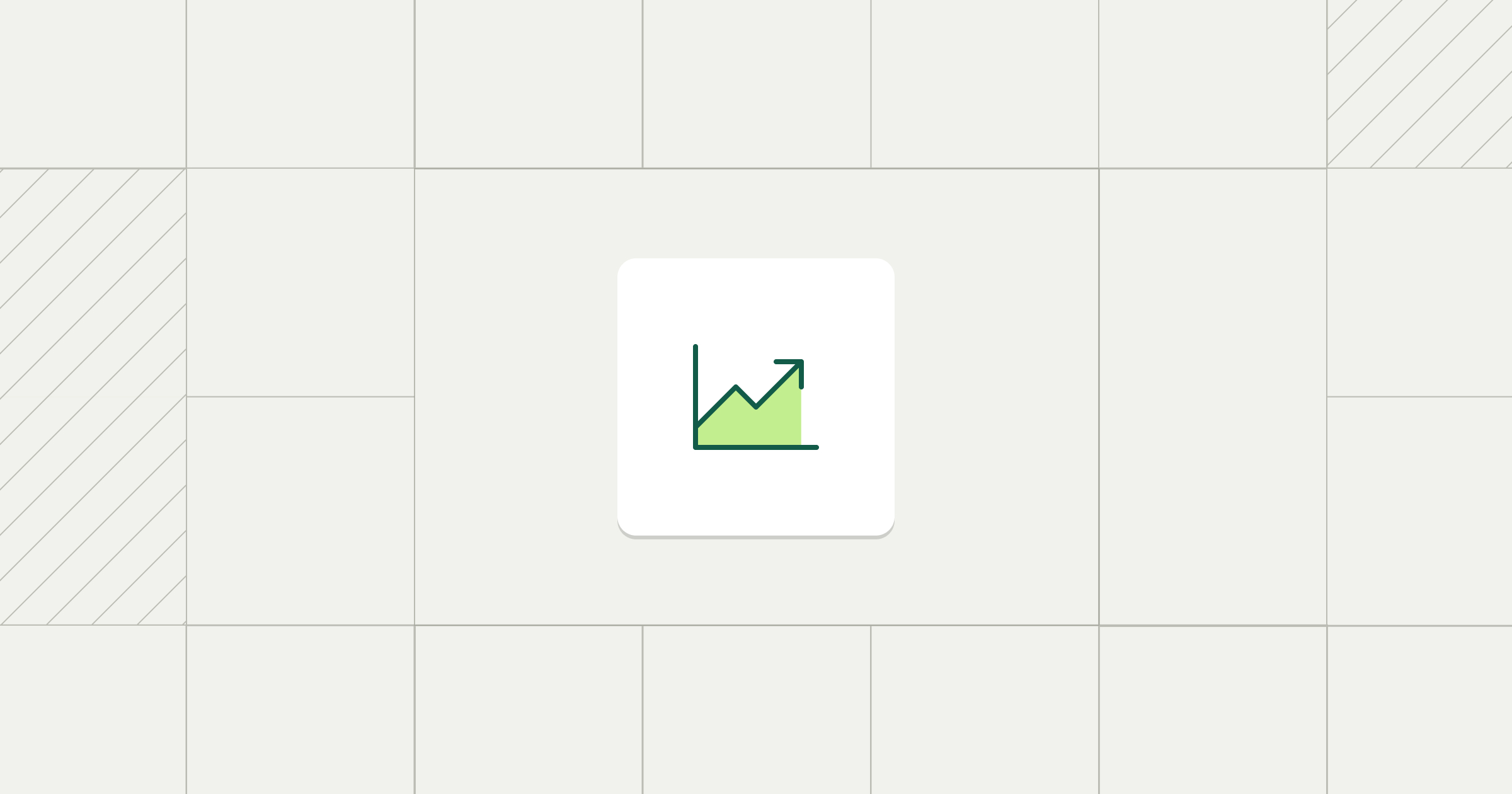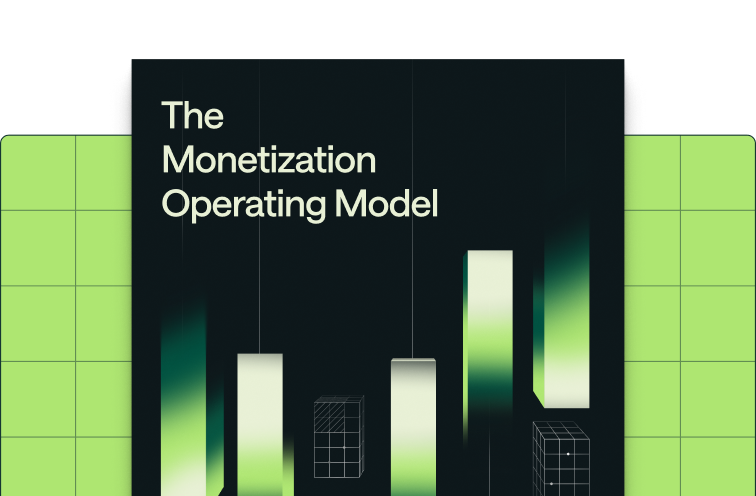Share
AI and cloud technologies have accelerated how products are built, used, deployed, and valued.
Software now performs work autonomously rather than simply supporting it. Many companies are still charging for straightforward access to their product, rather than results. This is out of sync with customers who expect to be able to pay for value received. This shift from the Access Era to the Value Era has created a scenario where most companies are still pricing like it's 2015, charging for access rather than results.
Companies that adapt their pricing models to align with how value is delivered will outpace competitors stuck in legacy revenue models. The challenge is that most billing infrastructure wasn't designed for the pricing complexity required today. Legacy billing systems force companies to choose between business model innovation and operational stability.
The companies that will win are those that build monetization infrastructure flexible enough to support any pricing model their product strategy demands.
{{widget-monetization-whitepaper}}1. AI pushes software companies to consider usage-based and outcome-based pricing models
AI fundamentally changes value delivery. Software now completes workflows and makes decisions autonomously, making companies reconsider traditional seat-based pricing in favor of usage-based and outcome-based models.
"For decades, seat-based subscriptions dominated SaaS pricing models. But with AI reshaping how software's value is perceived, companies are being compelled into usage- and outcome-based pricing", Scott Woody.
What's happening:
AI products can scale value delivery dramatically without adding seats. When an AI agent processes 50 emails for one customer and 5,000 for another, per-seat pricing breaks down. Companies need pricing models that capture the variable value AI creates.
AI features also carry real infrastructure costs. Without usage-aligned pricing, heavy AI users become loss-making customers while light users subsidize compute-intensive workloads.
Why this matters to real companies:
After analyzing usage patterns across AI-powered products, teams consistently discover that flat-rate pricing creates unsustainable unit economics. Heavy users can consume dramatically more compute resources than light users while paying identical fees, as OpenAI discovered when serving "a wide range of customers, from solo developers to enterprises, each with unique usage patterns.”
The pricing model mismatch becomes critical when products scale beyond early adopters. Enterprise customers often generate massive usage spikes that can turn profitable accounts into cost centers overnight without consumption-based pricing.
Framework for AI pricing alignment:
- Map value delivery to resource consumption - Track which features consume significant compute resources and create variable costs
- Identify usage patterns across customer segments - Measure how different customer types consume AI features differently
- Design pricing that captures variable value - Create pricing tiers that reflect actual resource consumption and customer outcomes
- Build infrastructure for real-time tracking - Implement systems that can meter AI usage accurately and adjust pricing dynamically
- Test pricing models with controlled cohorts - Launch new pricing with limited customer segments before broader rollout
How to stay ahead:
Get better alignment between costs and revenue when you move AI features to consumption-based pricing. Focus on pricing models that scale with actual AI usage rather than theoretical access.
2. Hybrid models emerge as the dominant pricing architecture
Single-approach models can't capture the complexity of how modern software delivers value. Companies combine subscriptions, usage-based components, outcome-based elements, and multiple value metrics within single customer relationships.
"The trend is toward greater complexity both in terms of decisions and variety of pricing models"--[Kyle Poyar.
What's happening:
Modern B2B products often deliver both access value and consumption value simultaneously. Platform access provides baseline functionality, while AI features, data processing, or API calls create variable value that scales with usage.
When products deliver both types of value, hybrid models optimize revenue capture across the entire customer lifecycle rather than leaving money on the table with single-dimension pricing.
Why this matters to real companies:
Ten years of SaaS pricing evolution taught us that customer segments have fundamentally different procurement patterns. Startups want predictable base costs with pay-as-you-grow flexibility. Even when enterprises have committed to a quarterly or yearly spend, they still want to optimize how they use that spend based on actual consumption patterns within those commitments.
Hybrid models serve both segments without having to build separate products or technical systems for different customer segments, eliminating the need to choose between customer types or build separate pricing systems.
Framework for hybrid pricing design:
- Map value delivery patterns across your product - Identify which features provide access value vs consumption value vs outcome value
- Analyze customer segment needs - Understand how different customer types prefer to budget and procure software
- Design complementary pricing components - Create subscription bases that work with usage charges without creating billing complexity
- Build unified billing infrastructure - Ensure systems can handle multiple pricing elements within single customer contracts
- Create transparent customer communication - Help customers understand how pricing components work together, and to give them insight on usage and spend.
- Test hybrid approaches with pilot segments - Validate pricing combinations before broad deployment
How to stay ahead:
Hybrid models capture value across different usage patterns more effectively than single-approach pricing approaches. Design billing infrastructure that supports multiple pricing elements simultaneously rather than forcing binary choices.
3. Building pricing into your product experience becomes a competitive differentiator
When pricing becomes variable, billing transparency shifts from back-office function to front-end competitive advantage. Customers demand real-time visibility and control over their spending when costs fluctuate based on usage.
What's happening:
Usage-based and hybrid pricing models require real-time visibility, spending controls, and predictive billing to prevent bill shock and build customer trust. Without transparency, variable pricing creates anxiety rather than value alignment.
Customers who can't predict or manage their spend become churn risks, especially in economic downturns when budget control becomes critical.
Why this matters to real companies:
After implementing usage-based pricing across 50+ customer accounts, the pattern is clear: billing transparency directly correlates with customer satisfaction and expansion revenue. Customers who understand their consumption patterns optimize their usage and grow their accounts systematically.
The companies that treat billing visibility as afterthoughts see higher support ticket volumes, more billing disputes, and lower net dollar retention compared to those building transparency into core product experience.
Framework for billing transparency:
- Build usage visibility into core product interfaces - Customers need real-time insights when their spend is tied into usage, and they want it built right in.
- Provide real-time consumption tracking - Show usage and costs as they accumulate, not just at month-end
- Create predictive billing estimates - Help customers forecast their costs based on current usage trends
- Enable customer-controlled spending limits - Let customers set their own budget controls and usage alerts
- Design clear usage-to-value mapping - Help customers understand what they're getting for their consumption
- Build proactive communication workflows - Alert customers before they hit spending thresholds or unusual usage patterns
How to stay ahead:
Spending visibility and controls significantly improve their comfort with variable pricing. Treat billing transparency as a product feature that differentiates your offering rather than operational overhead.
4. Cross-functional alignment becomes critical for pricing success
Pricing changes are cross-functional by nature, but most organizations fragment pricing ownership across teams. Every team becomes a growth team as pricing touches product, engineering, finance, sales, and customer success.
"More and more of the most successful companies are treating pricing and packaging and growth as their core metric and less centralizing growth or monetization in only one part of the business", Scott Woody.
What's happening:
Most organizations fragment pricing across teams. Product owns packaging, finance owns billing, sales owns negotiation, and engineering owns implementation. This creates coordination bottlenecks that slow pricing iteration and create execution risk.
"When [pricing changes] get made, you frequently will find that one person's sticking their neck out and then they're not getting the full support of the entire rest of the exec team", Kyle Poyar
Why this matters to real companies:
Successful changes require coordinated execution across multiple functions. The failure pattern is consistent: pricing strategies developed in isolation break during implementation because other teams weren't involved in the design process.
Cross-functional misalignment creates revenue leakage through disconnected systems, inconsistent customer communication, and pricing logic that doesn't match operational capabilities.
Framework for pricing alignment:
- Define clear pricing ownership and accountability - Assign someone to coordinate pricing decisions across all functions rather than fragmenting ownership
- Create cross-functional pricing workflows - Establish processes that bring teams together at critical decision points
- Build shared data and reporting systems - Ensure all teams work from consistent pricing and usage data
- Establish regular pricing review cadences - Create systematic touchpoints for evaluating pricing performance across functions
- Design approval processes that maintain speed - Enable fast iteration while ensuring necessary stakeholder buy-in
- Train teams on pricing implications of their decisions - Help product, sales, and success teams understand how their actions affect pricing outcomes
How to stay ahead:
Dedicated pricing coordination significantly reduces implementation time and execution risk. Consider creating roles that own the monetization system end-to-end rather than leaving coordination to chance.
5. Speed of pricing transformation creates competitive divides
Companies are splitting into two categories: those that can adapt pricing quickly and those stuck with manual processes. The transformation timeline is compressed because AI adoption and market dynamics move faster than previous technology shifts.
What's happening:
"The bigger risk is companies just don't make the changes that ultimately are necessary. Inertia leads to avoidance, which ultimately hurts the business more than moving early",Kyle Poyar.
Companies that wait for perfect pricing models miss market opportunities while competitors capture value with iterative approaches.
Why this matters to real companies:
After observing pricing transformations across different market cycles, speed becomes a sustainable competitive advantage. Companies that can experiment with pricing models and implement successful changes quickly capture market share while competitors analyze their options.
The gap widens over time because pricing agility compounds. Fast movers learn what works through experimentation while slow movers struggle with analysis paralysis.
Framework for pricing transformation speed:
- Start with infrastructure assessment - Evaluate whether current systems can support pricing evolution or need replacement
- Plan iterative implementation - Design transformation phases that build capabilities incrementally rather than requiring full system replacement
- Build experimentation capabilities - Create safe testing environments for new pricing models before broad deployment
- Develop rollback procedures - Ensure pricing changes can be reversed quickly if they don't work as expected
- Partner strategically for capabilities - Use vendors for billing infrastructure rather than building custom systems that slow iteration
- Create clear success metrics - Define how to measure pricing experiment performance and make systematic improvement decisions
How to stay ahead:
Users frequently mention that pricing experimentation capabilities enable continuous optimization rather than annual overhauls. Invest in systems that support rapid, safe pricing iteration rather than waiting for perfect strategies.
6. Pricing becomes a core capability and competitive strategy
Pricing is no longer a one-off exercise, it's an ongoing capability requiring systematic processes and competitive differentiation. Companies need dedicated resources to manage pricing complexity while turning monetization agility into sustainable competitive advantage.
What's happening:
The idea of copying competitor pricing disappears as companies recognize that optimal pricing depends on their unique product characteristics and value delivery patterns. Pricing becomes a core competitive strategy rather than operational afterthought.
Companies need dedicated resources to manage pricing proliferation and experimentation while preventing operational chaos. As pricing models become more complex, ad-hoc approaches break down completely.
Why this matters to real companies:
Pricing becomes a competitive advantage when treated as living infrastructure rather than periodic strategy. Companies that can continuously optimize pricing based on customer behavior and market feedback outperform those locked into annual review cycles.
Pricing decisions compound over time. Small improvements in pricing capture, customer segmentation, and value communication create significant competitive advantages that are difficult for competitors to replicate.
Framework for pricing as competitive capability:
- Establish dedicated pricing ownership - Assign specific resources to manage pricing strategy, implementation, and optimization rather than treating it as everyone's part-time responsibility
- Build systematic experimentation processes - Create safe, controlled methods for testing new pricing approaches with proper measurement and rollback capabilities
- Develop pricing logic that operates independently of product code - Enable pricing iterations without engineering dependencies or deployment cycles
- Create continuous feedback loops - Establish regular processes for gathering customer feedback, analyzing usage patterns, and identifying optimization opportunities
- Build cross-functional coordination workflows - Ensure pricing decisions integrate smoothly across product, sales, finance, and customer success functions
- Invest in pricing analysis capabilities - Develop internal expertise in pricing strategy, behavioral economics, and revenue optimization rather than relying on external consultants
- Treat pricing as ongoing competitive differentiation - Use pricing agility to respond faster than competitors and capture market opportunities
- Build capabilities for continuous optimization - Create systems enabling systematic improvement rather than periodic overhauls
How to stay ahead:
Treating pricing as ongoing competitive capability rather than periodic project significantly improves business outcomes. Build internal functions that manage complexity while enabling systematic innovation and competitive response.
Building for the Value Era
Pricing flexibility becomes the foundation for competitive advantage in the Value Era. These trends represent fundamental transformation in how B2B software companies create, deliver, and capture value, requiring new operating models built for dynamic value monetization.
The companies that recognize this shift early and build value-aligned monetization infrastructure will establish significant competitive advantages over those constrained by legacy billing systems.
The systematic approach to Value Era monetization:
- Assess current pricing constraints - Identify where existing systems limit pricing strategy and business model evolution
- Map value delivery patterns - Understand how your product creates different types of value for different customer segments
- Design flexible pricing architecture - Integrate systems that can support any pricing model your strategy requires
- Implement iterative transformation - Change pricing capabilities incrementally rather than attempting complete overhauls
- Build continuous optimization processes - Treat pricing as ongoing capability that evolves with your product and market
The imperative: Move beyond viewing pricing as a quarterly exercise. Treat it as core operational capability that evolves as fast as product development, with infrastructure that supports any pricing model your strategy demands.
Bottom line: Companies thriving beyond 2025 will define value clearly, deliver it measurably, and charge for it transparently,while maintaining operational agility to iterate as markets evolve.
The future belongs to companies that can price as dynamically as they ship features, powered by monetization infrastructure that treats complexity as competitive advantage rather than operational burden.
{{widget-monetization-whitepaper}}








%2520(1)%2520(1).png)
.jpg)
.png)